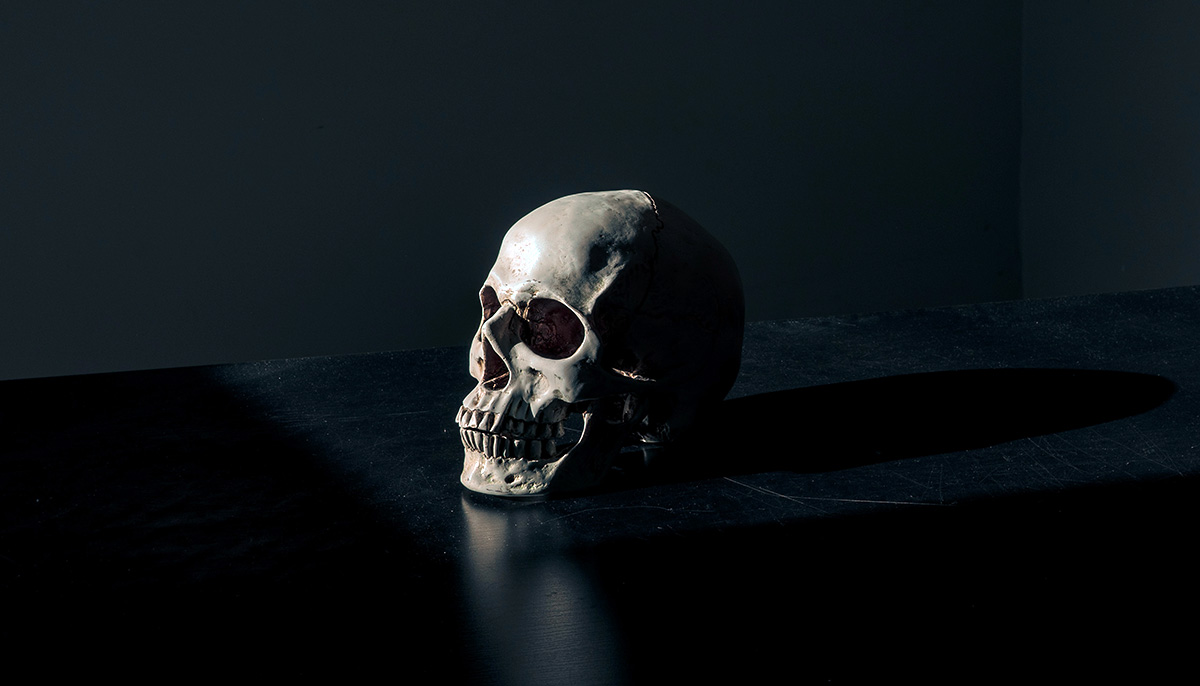In order to live, we must die. Obvious, right? Yet, most of us don’t want to contemplate our existence, much less the lack thereof. There’s so much else to focus on: career advancement, material possessions, second mortgages. These things keep us in motion, diverting our attention away from even bigger issues.
Maranasati, also known as mindfulness of death, or death awareness, is a Buddhist meditation practice in which one frequently keeps death in the forefront of thought. This concept can seem off-putting to Western minds, for whom talk about death is often swept under the rug. But it holds the key to liberating oneself from death’s grip. I’ve found maranasati to be tremendously helpful in my own life. With an open mind and heart, this practice can be incredibly uplifting and, dare I say, life-changing.
Instead of sleepwalking through parts of our lives, we can become mindful of our mortality.
Why do I say life-changing? Well: the pain of avoiding the unavoidable, which so many of us do, can actually be worse than the fear of surrendering to the inevitable. Acceptance is liberating. It’s counterintuitive, but the avoidance of our mortality is the very thing that continues to perpetuate our cycle of suffering. Contemplation of death changes this because it forces us to awaken to the present moment. Instead of sleepwalking through parts of our lives, we can become mindful of our mortality, shift our perspective, and our life itself.
Some of us might only become deeply aware of our life when faced with a near-death experience or severe illness. But we don’t need to wait for a terminal diagnosis. We can begin right here, right now, wherever we are, and start to see mindfulness of death as a precursor to truly living. The benefits of this type of contemplation are numerous and worth exploring.
A daily cold shower to start your day
Picture yourself lying in bed, warm and cozy. Groggy, with eyes half shut, you head to the washroom and hop into a shower already running with the tap turned all the way cold. How quickly would that take you out of your “sleepwalking” state? Instantaneously. Mindfulness of death is like that. It wakes you up to the present moment and puts your life into perspective.
Knowing that death can strike at any time — if we engage with that thought in a healthful, considered way — can help us make better decisions each day. So try imagining that today may be your last; it might make you second-guess spending the night watching TV when you could be spending that time with your children or partner. Or what about that book you’ve always wanted to write? The business idea you have? Mindfulness of death is a sure way to eliminate, or at least severely reduce, procrastination.
A grip worth loosening
We all have an expiration date. The moment we took our first breath, we simultaneously inched closer to our last. When we’re mindful of this fact, we’re more likely to make the most of the time we have. Our experiences deepen. You might even sense that each breath becomes more joyful, each image seen more vividly. Attachment and clinging, as Buddhism tells us, are the great sources of our suffering. Mindfulness of death, on the other hand, is the ultimate letting go — of our attachments, and therefore, our overall suffering.
A day in the life of death
Mindfulness of death is not meant to be a morbid experience. Its value is in bringing the immediacy of life to our present awareness. Easing oneself into practice might be useful and we can all find small ways to begin: If you see a dead animal on the side of the road, maybe you needn’t be so quick to look away. You can pause with that image, contemplate the fact that this being was alive and breathing not so long ago. Notice the stillness. What arises within you? Notice that, too.
You can gradually deepen this practice by spending some time throughout your day (I prefer the morning after meditating) on being mindfully aware of your mortality. You might, for example, imagine yourself as the observer of your own funeral, surrounded by friends and family members. What feelings arise now? It’s common to have wandering thoughts, intense sensations, and even fear. You can sit with it all. If you care to explore this practice more formally, the Satipatthana Sutta: The Foundations of Mindfulness, contains nine “cemetery contemplations.”
If that seems too intense, try keeping in mind the Five Remembrances, found in the Upajjhatthana Sutta:
The Five Remembrances
- I am of the nature to grow old. There is no way to escape growing old.
- I am of the nature to have ill health. There is no way to escape having ill health.
- I am of the nature to die. There is no way to escape death.
- All that is dear to me and everyone I love are of the nature to change. There is no way to escape being separated from them.
- My actions are my only true belongings. I cannot escape the consequences of my actions. My actions are the ground on which I stand.
I have The Five Remembrances written on a piece of paper that I keep displayed on my desk. I look at it every day. It’s a concise reminder to stay present, to accept life for what it is, and to avoid trying to manipulate my experiences to fit my expectations.
Beginning your practice of mindfulness of death
I recently sat down with Buddhist teacher Nikki Mirghafori to discuss the power of death awareness for The Lion’s Roar Podcast. Nikki is a Buddhist teacher and Artificial Intelligence scientist. She is a lineage holder in the Theravada tradition, empowered by the Burmese master Venerable Pa Auk Sayadaw, as well as the Spirit Rock Meditation Center, Insight Meditation Society, and the Insight Meditation Center.
Here’s a link to her episode, which includes a guided death-awareness meditation. I encourage you to check it out. It’s a great practice for, as Nikki says, awakening and letting go.

